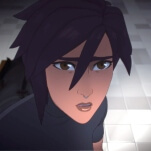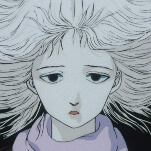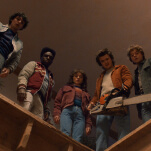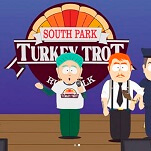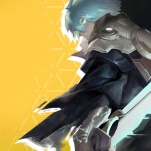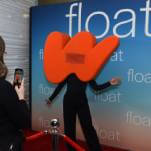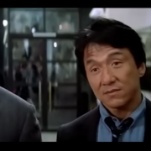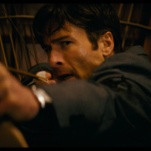Pt. 2—Exploration is its own reward in The Legend Of Zelda: Breath Of The Wild
Welcome back to our ongoing Game In Progress review of The Legend Of Zelda: Breath Of The Wild. Over the next few weeks, Gameological Editor Matt Gerardi will be playing through the Switch version of Nintendo’s latest fantasy epic and checking in with reports along the way. This second installment, which is as spoiler-free as possible, covers everything from leaving the Great Plateau to his first encounter with the closest thing the game has to a dungeon—a span of around 25 hours. As always, we invite you to read, comment, and play along as we march our way toward Calamity Ganon, whatever the hell that means.
Can exploration be its own reward? That’s the question at the center of The Legend Of Zelda: Breath Of The Wild’s ambitious reconsideration of what an open-world game has to be. Nintendo has taken that template, one that was abused to the point of impotency in the last decade, and not so much reinvented it as reassessed its priorities. Many of its conventions are in there, but BOTW approaches this crowded genre with a more minimalist philosophy, and the result is a game that conveys a sense of discovery and satisfaction unlike anything else. Dozens of hours into it, and with no feasible end in sight, it’s safe to say the answer to that question is a resounding yes.
At this point, to talk about the specifics of what I’ve encountered below The Great Plateau would be to betray Breath Of The Wild’s appeal. With its near-total lack of guidance and a world that’s orders of magnitude larger than any Zelda game—or most any game, for that matter—its most impressive achievement is an innate ability to surprise. Every time I began to feel like I had a grip on what Hyrule had to offer and how Link’s quest to rid the land of evil might play out, I’d stumble across some heretofore unimaginable thing that shatters my entire notion of what this game is capable of. The further you push yourself into its world, the more of its layers Breath Of The Wild peels back. Those moments are as thrilling as they are reality-breaking, a reminder that something fantastical could be at the top of any mountain or beyond any waterfall.
What makes those moments so powerful is Hyrule itself. Its relative emptiness and the way you’re forced to trudge through it on foot if you want to get anywhere new—you can teleport around to some locations you’ve found and you can ride a horse, but it should go without saying they can’t climb mountains or swim across lakes—is sure to grind on some players, but it serves a purpose. It lulls you into a sense of normality that allows those revelatory moments to be as shocking as they are. It’s a better realization of the concept No Man’s Sky was founded upon and, perhaps, took too far: Discovery requires downtime. If everything you trip over feels special, then nothing is special at all.

